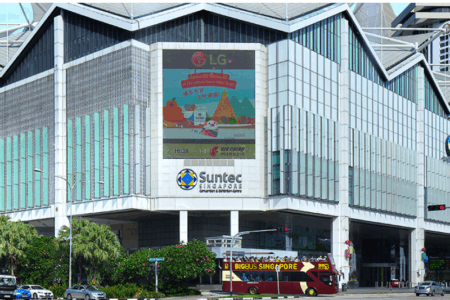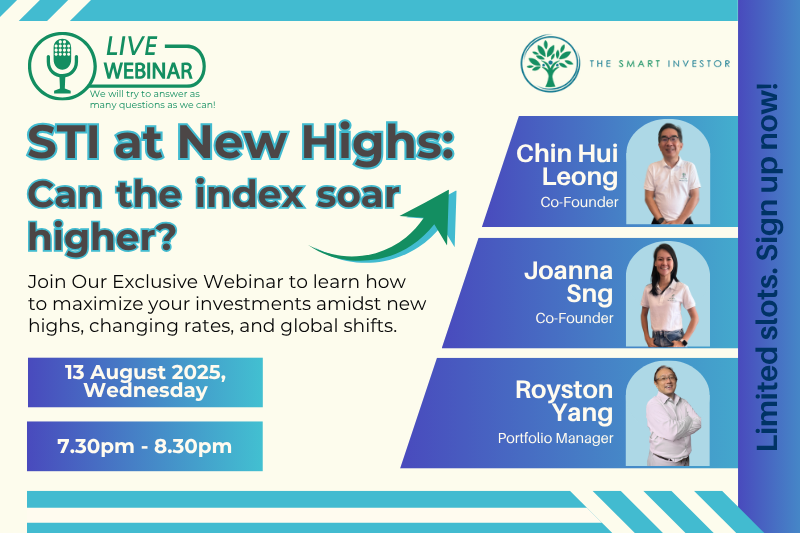Building a comfortable retirement is not just about saving, but where you save, and how those savings grow.
For Singaporeans, the Central Provident Fund Board (CPF) forms the foundation for retirement with its steady, government-guaranteed returns without market risk.
Dividend stocks provide flexibility and potentially higher returns, but with greater volatility.
With inflation pressuring retirement planning, understanding both approaches is essential.
We break down both approaches, comparing their growth potential, risks, and how they can work together in a resilient retirement portfolio.
The CPF Advantage: Guaranteed, Risk-Free Growth
CPF savings earn guaranteed interest rates set by the Singapore Government.
The Ordinary Account (OA) earns 2.5% per annum, while the Special Account (SA), Retirement Account (RA), and MediSave Account (MA) earn 4.0% per annum.
Interest is compounded annually.
Consider a 30-year-old working adult contributing S$500 monthly to his SA.
Over 25 years until age 55, he will contribute S$150,000.
With 4% annual interest compounding on these monthly contributions, the total grows substantially through interest earned on both contributions and accumulated interest.
The compounded interest he will accumulate amounts to approximately S$100,000.
Allowing this amount to compound until CPF Life payouts begin at 65 amplifies growth further.
CPF Life then provides guaranteed monthly payouts for life – a safety net other retirement plans cannot match.
For conservative savers prioritising capital preservation, CPF’s guaranteed returns currently exceed inflation while eliminating market risk entirely.
The Dividend Stock Advantage: Flexibility and Higher Potential Returns
Dividend stocks offer different appeal than CPF.
They carry higher risks, but provide potentially higher returns, without government guarantees and with the possibility of dividend cuts during downturns.
Quality blue-chip companies with strong dividend track records make suitable retirement holdings.
Examples include DBS Group Holdings (SGX: D05), Singapore’s largest bank; Singapore Exchange Limited (SGX: S68), which operates the market infrastructure; and Parkway Life REIT (SGX: C2PU), a healthcare REIT with long-term leases.
DBS Group Holdings’ trailing dividend yield sits at 5.2%, beating the 4% that CPF SA offers, and has declared dividends of S$2.85 per share year-to-date (YTD).
Parkway Life REIT has a trailing 3.8% yield, with distributions at S$0.1518 per unit YTD, while Singapore Exchange’s trailing dividend yield sits at 2.2%, having paid out S$0.375 per share YTD.
The Straits Times Index (SGX:^STI), or STI, comprising Singapore’s 30 largest and most actively traded stocks, provides useful performance context.
For the 10 years ending June 2025, the STI generated annualised total returns of 8.9%.
What happens if S$100,000 is invested in an STI-tracking portfolio versus the CPF SA over 20 years?
CPF’s 4% interest rate compounded annually generates about S$120,000 in interest – total value of S$220,000.
Meanwhile, an STI-tracking portfolio at 8.9% annualised returns produces almost S$550,000 in interest – that’s roughly 2.5 times more than CPF SA returns.
However, this scenario requires STI to maintain steady 8.58% returns, which cannot be guaranteed due to market volatility.
Understanding the Trade-offs: Risk vs Return
We have all heard of higher risks, higher returns.
However, the higher returns are not guaranteed, and when it comes to investing, the risks might just wipe out your entire investment.
CPF provides predictable returns with zero downside risk, as your principal is protected.
On the other hand, dividend stocks offer high potential but significantly greater volatility.
Long-term investors can mitigate volatility through diversification and disciplined strategies like dollar-cost averaging (DCA), although not without risks.
The choice is not simply which is better, but which mix best suits your time horizon, risk appetite and retirement goals.
Common Mistakes to Avoid
One of the biggest mistakes many Singaporeans make is withdrawing their CPF funds prematurely for non-essential purchases, reducing compounding potential.
CPF should anchor your portfolio as a low-risk foundation, enabling calculated risks elsewhere.
Another common pitfall is chasing high dividend yields without understanding the underlying risks.
Stocks offering 8% to 10% yields often signal unsustainable payout ratios or financial distress.
Quality dividend stocks like DBS or Parkway Life typically offer moderate 4% to 6% yields backed by consistent cash flows and strong balance sheets.
Focus on sustainable dividend payers, not the highest yields.
Overconcentrating on a single sector is another common investing mistake.
Whether it’s REITs, banks, or the tech sector, concentrating solely on a single sector increases portfolio risk.
Economic downturns disproportionately affect specific sectors, making diversification essential.
What This Means for Investors
Most Singaporean investors benefit from a hybrid approach.
Use CPF as your risk-free foundation – a safety net you can rely on without worry.
Layer dividend-paying stocks on top for income growth and higher potential returns.
Get Smart: Best of Both Worlds with CPF and Dividends
Why choose when you can harness both?
The CPF vs dividend debate is not about picking sides.
Smart investors use CPF as their safety net and dividend stocks as their growth engine.
Start early, stay disciplined, and let both strategies work hand-in-hand to secure your financial future.
The key lies in balancing CPF for safety with dividends for growth, calibrated to your personal risk tolerance and retirement timeline.
First-time investors: We’ve finally released our Beginner’s Guide. Read it in an afternoon, follow the principles, pick an investing style and buy your first SGX stocks within the next few hours! Click here to download it for free.
Follow us on Facebook, Instagram and Telegram for the latest investing news and analyses!
Disclosure: Wenting does not own any of the above-mentioned stocks.





